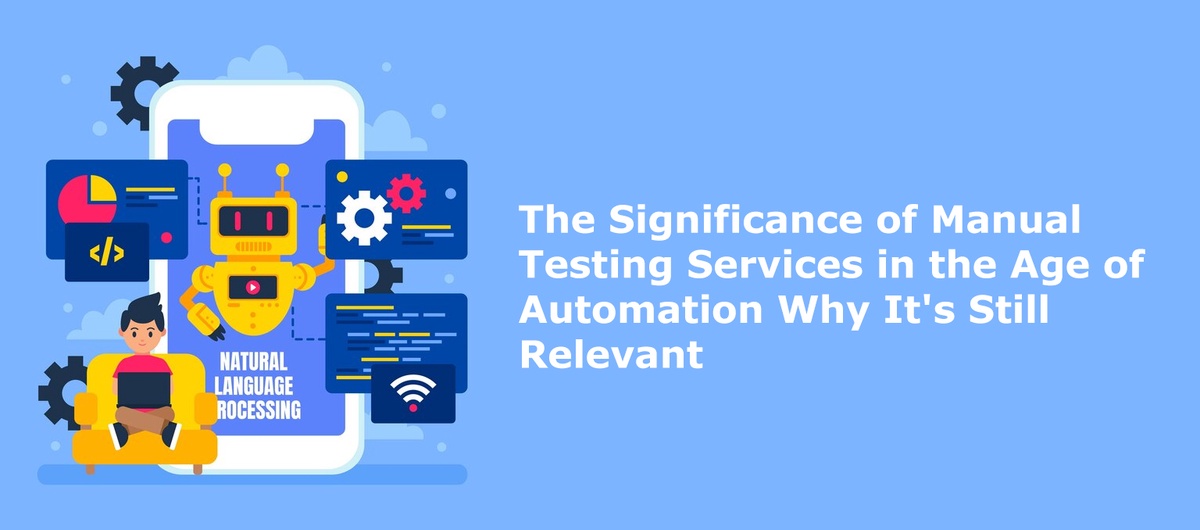In today's fast-paced world of software development, automation has become a cornerstone for efficiency and reliability. Automated testing tools and frameworks have revolutionized the industry, enabling faster testing, quicker release cycles, and improved quality. However, amidst this automation revolution, the significance of manual testing remains undeniably relevant. Manual testing services, with its human touch and cognitive capabilities, complements automation by addressing certain critical aspects that automated testing alone cannot achieve.
The Rise of Automation in Testing
Automation in software testing has grown significantly over the past few decades. The allure of automation lies in its ability to execute repetitive and predictable test cases with unmatched precision and speed. Automated test suites can run countless tests, provide instant feedback, and help ensure that software meets specific requirements. As a result, many organizations have adopted automation to streamline their testing processes and enhance product quality.
The Limitations of Automation
While automation has brought about transformative changes, it has its limitations that necessitate the continued relevance of manual testing. Here are some of the key reasons why manual testing remains crucial in the age of automation:
Exploratory Testing:
Exploratory testing involves testers actively exploring the software to discover issues that automated scripts might miss. Testers use their creativity and domain knowledge to identify unexpected problems, making it essential for achieving thorough test coverage and ensuring the user experience is impeccable.
Usability Testing:
Usability testing requires human intervention to evaluate the software's user-friendliness and overall user experience. Testers can assess design aesthetics, navigation, and intuitive use, providing valuable feedback that automated tests cannot.
Real-world Scenarios:
Manual testing can simulate real-world scenarios that are hard to capture through automation. Testers can mimic unique user interactions and edge cases, making sure that the software performs correctly in situations that are not easily scriptable.
Ad Hoc Testing:
In the early stages of development, requirements and features can change rapidly. Manual functional testing is adaptable and allows for quick testing of new functionalities without the need for constant script modifications.
Contextual Understanding:
Manual testers have an in-depth understanding of the business domain and customer expectations. This knowledge helps them identify subtle issues that automated tests may overlook. They can assess whether the software aligns with the broader business goals.
Visual and Multimedia Testing:
For applications with multimedia elements or complex visuals, human testers can verify the appearance and behavior, ensuring that the aesthetics meet design standards and customer expectations.
Unscripted User Behavior:
Users can behave unpredictably. Manual testers can mimic real user interactions, evaluating the software's ability to handle unexpected inputs, errors, and user-driven interruptions.
Early-Stage Testing:
During the early stages of development, when the application is evolving rapidly, manual testing can be more practical. Automation often requires stable and mature code to be effective.
Cost-Effective for Small Projects:
For smaller projects or startups with limited resources, manual testing can be more cost-effective and faster to implement, as setting up automation tools and scripts can be time-consuming and expensive.
Critical Thinking and Judgment:
Manual testers employ critical thinking, judgment, and intuition when evaluating the software. They can determine the severity of defects and the potential impact on end-users, guiding development teams in prioritizing issues.
Conclusion
While automation has significantly improved the efficiency and reliability of software testing, manual testing service continues to play a vital role in the development process. The unique qualities of human testers, such as creativity, domain knowledge, and adaptability, make manual testing indispensable. It complements automation by addressing scenarios where human judgment and intuition are essential. To achieve a balance between manual and automated testing, organizations should recognize the significance of manual testing and integrate it into their overall testing strategy. Ultimately, the successful development of high-quality software requires both manual and automated testing to coexist harmoniously in the age of automation.
The Significance of Manual Testing Services in the Age of Automation Why It's Still Relevant

4 min read
03 November 2023
manual testing services functional testing service manual software testing companies best companies for manual testing manual software testing company
In case you have found a mistake in the text, please send a message to the author by selecting the mistake and pressing Ctrl-Enter.

No comments yet